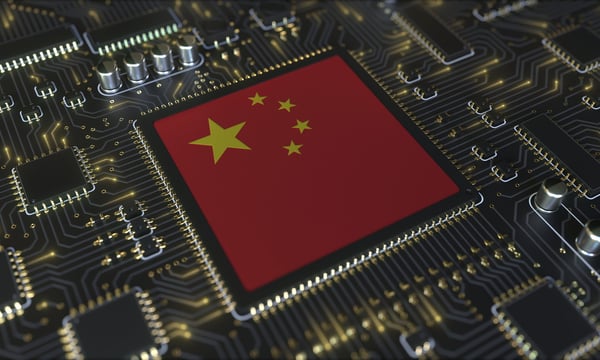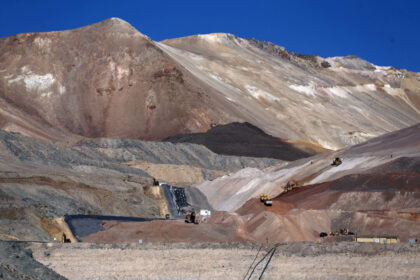The world is evolving into a highly competitive landscape for innovative technologies. In the high-stakes competition for leadership, the West finds it increasingly challenging to derail China from winning and avoid being put on the back foot in this crucial race.
Many observers are fascinated by the fast growth of Chinese high-tech capabilities, but they are confident the West will ultimately win the race for supremacy. They believe that keeping China far from the latest Western technologies will be enough to outmaneuver China from claiming leadership. Instrumental to this dream is simply stopping the export of top-tier chips to China.
While the politically driven stoppage of cutting-edge chip exports may shape the short-term Cold War, it could backfire in the long term. Ignoring that innovative technology relies on a terrific and intricate ecosystem could lead the West to disappointment. The West’s current trajectory may not be enough to outmaneuver China in the global AI and technological dominance race. China’s strategic ambition, reminiscent of the pioneering spirit of the Apollo missions, highlights the contrast with the West’s current approach.
Sputnik 1, the first Soviet artificial satellite, was launched on October 4, 1957, which sparked the so-called Space Race. A strong line-up soon followed it: Vostok 1 on April 12, 1961, which carried Yuri Gagarin as the first human in orbit; in 1963, Valentina Tereshkova became the first woman in space aboard Vostok 6; and in March 1965, Alexei Leonov performed the first spacewalk during Voskhod 2. Moscow was winning the race.
Yet by July 20, 1969, the United States’ astronauts Neil Armstrong and Edwin “Buzz” Aldrin planted the U.S. flag on the Moon during the Apollo 11 mission. The Soviet Union’s early lead had evaporated and Moscow stepwise lost technological leadership.
At the time, the headlines focused on rockets and astronauts. However, a much less laser-focused story lay in how each nation organized its research, development, and scientific talent.
The United States built its space effort on a partnership between government, universities, and industry. The 1958 creation of NASA channeled federal funding into innovative research at universities nationwide. Graduate engineering, physics, and computer science programs expanded rapidly under this wave of investment, producing a steady stream of scientists and engineers who moved seamlessly into NASA projects or its industrial contractors. Aerospace leaders such as Boeing, Grumman, and North American Aviation collaborated closely with academic researchers, turning groundbreaking lab discoveries into technologies people benefit from. Thanks to NASA’s effective systems management, which harmonized the efforts of hundreds of thousands of people across NASA and its contractors at the height of the Apollo program, a vibrant pipeline of talent and innovation flourished in the United States.
By contrast, the Soviet Union’s research and academic structures were more centralized and more fragmented in practice. Space research occurred within the Soviet Academy of Sciences’ institutes under strict state control. Universities trained engineers and scientists, yet they were less directly connected to mission-driven space projects.
The heart of Soviet space hardware design lay in rival design bureaus, such as OKB-1 under Sergei Korolev and OKB-52 under Vladimir Chelomey, which competed for resources and prestige. These bureaus tended to guard their advances closely, limiting the flow of information even within the Soviet program. Without a unified organization like NASA in the United States, the USSR struggled to integrate academic research and industrial capability and create an ecosystem to turn knowledge into action.
This difference in R&D ecosystems compounded other challenges for the Soviet program. The death of Korolev in January 1966 deprived it of a unifying visionary, and the repeated failure of the N1 heavy-lift rocket, with four failed launch attempts between 1969 and 1972, made a crewed Moon landing unattainable.
Meanwhile, the United States had the political commitment in President John F. Kennedy’s May 25, 1961, pledge to land a man on the Moon before the decade’s end. By the late 1960s, the USSR shifted its focus toward long-duration spaceflight and orbital stations. The Moon was lost, and the Apollo 11 landing was a triumph for the United States.
China’s current push to dominate artificial intelligence and high technology shares striking structural echoes with the former Space Race, but also reveals how Beijing is consciously trying to avoid Moscow’s mistakes. The Soviet R&D ecosystem was fragmented, and core research occurred inside closed state institutes; no NASA-style central authority could integrate academia, industry, and government. By contrast, China’s current AI and high-tech strategy is built on tight state coordination and a deliberate fusion of academia, industry, and government policy.
Since the State Council’s 2017 “New Generation Artificial Intelligence Development Plan,” Beijing has set explicit milestones for 2030 leadership, backed by large-scale investments in research institutes, university programs, and industrial parks. Chinese universities are intertwined in applied R&D, registering patents, and partnering with tech giants like Baidu, Alibaba, Tencent, and Huawei to commercialize breakthroughs. China can deploy extensive facilities, data centers, and streamlined approvals at a speed that any Western benchmark would envy.
Where the Soviet Union relied on a narrow set of elite engineers, China is cultivating a dynamic AI ecosystem with key companies like Baidu, Alibaba, Tencent, Huawei, and SenseTime. Various organizations, including the Cyberspace Administration and the Ministry of Science and Technology, work together to implement the 2017 AI Development Plan, promoting innovation across government, industry, and academia.
China is hedging against chokepoints, shielding itself from U.S. export controls on advanced semiconductors by accelerating domestic chip fabrication. Huawei is leading the production of new AI chips and Ascend processors, with plans for dedicated fabrication and scaling, primarily through SMIC. Alibaba and Baidu are developing domestic AI accelerators to lessen dependence on imports.
Alongside these state-backed efforts, China’s AI strategy is designed as a hybrid model, pairing top-down policy guidance with the competitive pressure of the private sector that was missing during the Soviet era. Tech giants, a rising class of mid-tier innovators, and venture-backed startups channel billions into private R&D and sector-specific AI applications. Recent policy pushes like the “AI Plus” initiative further encourage diffusion into key sectors, reinforcing demand for domestic computers and applications.
China’s AI chip market is projected to reach $8.17 billion in 2025 and grow at a compound annual rate of about 30.69 percent, to exceed $31.16 billion by 2030. Domestic production capacity is expected to expand rapidly, with reports indicating efforts to triple AI chip output by 2026 through new facilities aligned with Huawei and others. SMIC, the country’s top foundry, is expanding its most advanced domestic nodes. It reportedly plan to double 7 nm capacity on a similar time frame, freeing up more allocations for designers like Cambricon, Biren, and MetaX.
This market-driven layer complements state priorities by iterating breakthroughs and scaling them into commercial products. Private companies, corporate labs, and startup incubators are turning cutting-edge lab discoveries into real-world applications. China’s AI chip sector is expanding at a rapid pace, with domestic foundries steadily improving process nodes and building “good enough” accelerators to meet surging demand in the face of Western export restrictions. The result is that the West’s export control policies are, paradoxically, accelerating the build-out of China’s own AI computing stack.
China has built an AI innovation engine that can absorb policy direction, leverage private capital, and convert technical gains into domestic resilience and global competitiveness. China’s integrated academia, industry, and government network is designed to sustain momentum and display resilience and creativity amid growing competition and technological restrictions.






